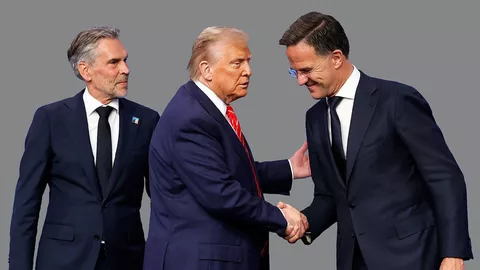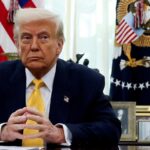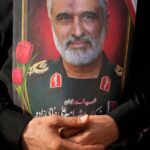The Impact of the Ukraine Conflict on NATO: Transformations Driven by Trump, Putin, and Geopolitical Realities

The war in Ukraine, exacerbated by the actions and policies of both former U.S. President Donald Trump and Russian President Vladimir Putin, has profoundly influenced the North Atlantic Treaty Organization (NATO), compelling the alliance to undergo swift and potentially lasting changes. This conflict has not only tested NATO’s cohesion and strategic priorities but also reshaped the geopolitical landscape of Europe and global security dynamics.
Under President Vladimir Putin, Russia’s aggressive military actions in Ukraine—most notably the 2014 annexation of Crimea and the full-scale invasion in 2022—have posed a direct challenge to the territorial integrity and sovereignty of a European nation. These actions have been perceived as a blatant violation of international law and the post-Cold War security order. Putin’s strategy aims to reassert Russian influence in its near abroad, counter NATO’s eastward expansion, and destabilize Western alliances.
“Beat the Pressure: A Comprehensive Guide to Lowering Blood Pressure Naturally.”
Buy book from Gumroad or Paystack
On the other side, President Donald Trump’s tenure was marked by a more transactional approach to NATO. Trump frequently criticized member states for not meeting defense spending commitments and questioned the alliance’s relevance. His rhetoric and policies introduced uncertainty about the U.S. commitment to NATO, causing unease among European allies. This ambivalence risked weakening the alliance’s unity at a time when Russian aggression was intensifying.
The combined effects of Putin’s military aggression and Trump’s challenging of NATO’s internal cohesion have forced the alliance to adapt rapidly. In response to Russia’s invasion of Ukraine, NATO has undertaken several significant measures:
- Enhanced Military Presence and Readiness: NATO increased its military presence in Eastern Europe, deploying additional troops, equipment, and infrastructure to deter further Russian aggression. This marks a substantial shift from previous post-Cold War drawdowns and reflects a renewed focus on collective defense as enshrined in Article 5 of the NATO treaty.
- Strengthening the Eastern Flank: Countries bordering Russia and Ukraine, such as the Baltic states and Poland, have received increased security guarantees and support. NATO has enhanced joint exercises and intelligence sharing to improve interoperability and readiness.
- Expansion of Membership: The conflict accelerated the process for countries like Finland and Sweden to join NATO, signaling a broader realignment in European security perceptions and a clear message to Russia about NATO’s resolve.
- Increased Defense Spending: The war underscored the necessity for member states to meet or exceed the 2% of GDP defense spending target. Many countries, motivated by both the immediate threat and the need to modernize forces, have committed to significant military investment increases.
- Strategic Reorientation: NATO has revised its strategic concept to prioritize deterrence and defense against Russia, while also addressing new domains of warfare, including cyber and hybrid threats that have been prominently utilized in the Ukraine conflict.
These changes are not merely reactive but represent a potential permanent transformation of NATO’s posture and mission. The alliance has moved away from the post-Cold War era’s focus on crisis management and counterterrorism to a renewed emphasis on collective defense against a revisionist power.
In conclusion, the war in Ukraine, influenced by Putin’s aggressive policies and compounded by the uncertainties during Trump’s presidency, has catalyzed a decisive shift in NATO. The alliance has emerged more unified, militarily robust, and strategically focused on countering Russian threats. These developments are likely to define NATO’s trajectory for years to come, ensuring it remains a central pillar of transatlantic security in an increasingly volatile world.
💔 “She said she loved me. And for fifty-two years, I believed her.” 💔
Buy The Book "The Longest Lie: A Husband’s Journey Through Love, Betrayal, and Redemption" From Gumroad






